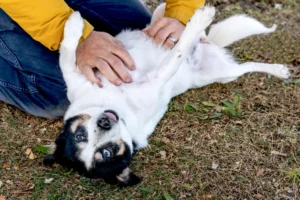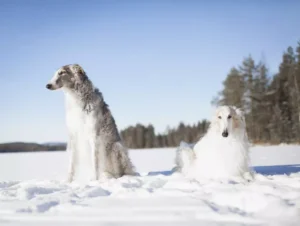
If you live with a dog, chances are you have noticed their whiskers–those stiff, coarse hairs that protrude from their fur around their nose and eyebrows–particularly when your pet is showing emotion or communicating their desires to you (like asking for an extra bite of food!). But why do dogs have whiskers? They serve an important function in helping navigate their environment more successfully.
What Are Dog Whiskers? Whiskers, also referred to as vibrassae, tactile hairs or sinus hairs, differ significantly in structure from the fur on your dog’s body in appearance, thickness and stiffness as well as connection with their bodies and brain. Whiskers only occur on dogs’ faces where they can be found above eyes, around nose, under chin and on cheeks – since dogs use these areas as sensors1
Anatomy of Dog Whiskers
Whiskers possess unique anatomy that accounts for their sensory function. Similar to fur, whiskers develop from hair follicles containing cells and connective tissue beneath your dog’s skin; but when it comes to whiskers they differ greatly as each contains large blood sinuses with many nerve endings, making whiskers particularly responsive systems when touch or pressure changes are detected by them; when these tiny pressure shifts are transmitted back through sensory nerves into the brain via sensory nerves; creating an extremely responsive system.1
There’s also a distinction in the types of muscles used to move whiskers. You might have seen your pup’s fur stand up along his back when scared or startled; this involuntary response results from smooth muscle movements beneath his skin similar to when people get goosebumps. Meanwhile, whiskers are connected to striated muscle, the type used for voluntary movements. Dogs have complete control over moving or extending whisker movements as needed1.
Whiskers appear early during embryogenesis of dogs and may provide important functions in newborn puppies who cannot see for the first ten days after birth, such as finding their mother and locating nursing nipples for nursing.
What Are Dog Whiskers Used for? Dog whiskers provide essential assistance to dogs by aiding with several vital activities, including:
Finding Their Way in the Dark Navigating Tight Spaces, Distinguishing Close Objects Where Eyesight Is Less Reliable, Locating Food and Water, Determining Threats within their Environments, Expressing Interest or Curiosity and Locating Odors can all be accomplished using wind direction for finding Smells
Picking up small objects with their mouth1, Whiskers also help shield eyes and faces from injury by activating reflex reactions such as blinking when something touches them above the eyes, or warning the dog when something sharp such as sticks or branches are nearby, giving him time to avoid potential injury.
Whiskers provide blind or senior dogs suffering from visual impairment with the means to move around their homes in comfort.
Dangers of Removing Dog Whiskers
While whiskers may seem innocuous enough at first glance, they play an invaluable role in helping dogs to navigate safely in their environment and avoid accidents. Absent whiskers increase injury risks significantly while sightless ones will bump into walls and corners more frequently1. Due to this essential sensory function in dogs’ lives, whiskers should only ever be removed when medically necessary (ie, treating wounds/abscesses etc).
WARNING Whiskers should never be plucked off unless medically necessary; trimming, shaving, plucked on or pulled at can cause pain to a dog.
Even though cutting whiskers doesn’t cause pain due to lack of nerve endings in their actual hair shafts, dogs still feel discomfort from having them cut or shaved. Many dogs with trimmed whiskers have difficulty fetching balls and often drop them immediately upon picking it up-a possible indicator that discomfort exists due to missing or shortened whiskers1.1
Dogs may sometimes damage or shed one or two of their whiskers, but as long as the follicle beneath their skin remains undamaged, new whiskers will soon form and grow back.
Dogs rely on whiskers to gain information about their surroundings, so it’s vital not to deny them access to this essential sense organ. Next time you see your pup sniffing or exploring, take note of his or her incredible sensory system that enables your canine friend to form an accurate view of its world.





